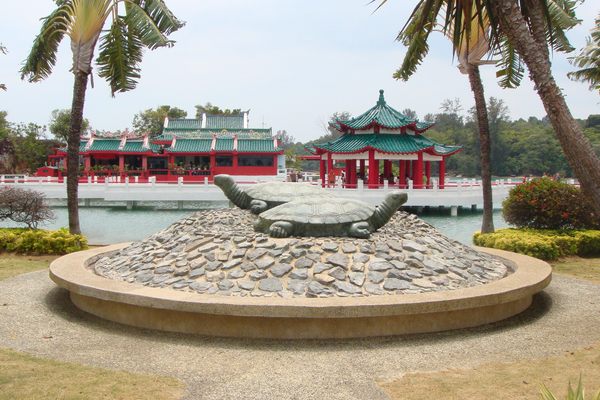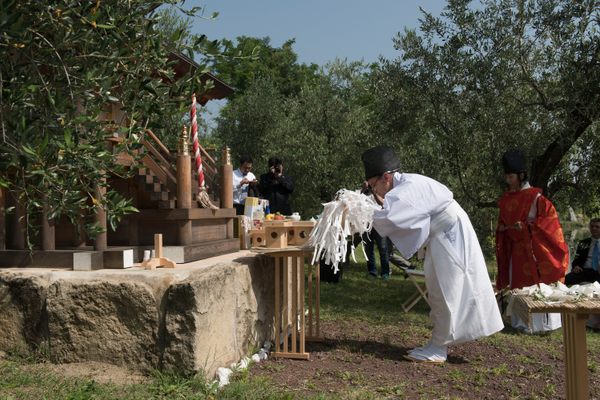Keramat Kusu
Three Malay graves are at the center of an annual pilgrimage that reflects syncretic practices.
Located on Kusu (Turtle) Island, not far from mainland Singapore, the keramats (venerated shrines) of Syed Abdul Rahman, Nenek Ghalib, and Puteri Fatimah stand as an emblem of syncretic cultural and religious practices in the region.
Together with the broadly Taoist Tua Pek Kong temple, the keramats are the focus of the annual pilgrimage season, held on the 9th lunar month of the Chinese calendar. The keramats are also referred to as Datuk Kong, a portmanteau Sino-Malay honorific for a respected person.
A set of myths provide some clues as to the origins of this pilgrimage practice. Though they vary, a common theme of the myths is a co-operative bond formed between Chinese and Malay communities. The most well-known myth involves a Chinese and Malay fisherman establishing a place of worship after being saved from drowning by a turtle. There is evidence that pilgrimages to the island began before the founding of the British colony of Singapore in 1819. First used by the British to bury those who died in quarantine on nearby St. John’s Island, joint Sino-Malay indignation pushed the colonial administration to respect the religious significance of the island.
The precise identity of Syed Abdul Rahman is unclear, though tradition states that he was a holy man who made his way to the island with his mother and sister, whose graves were collectively venerated after their deaths. Some accounts ascribed the identity of the shipwrecked Malay man to Rahman.
The present structure was constructed in 1921 by the Peranakan Chinese Hoe Beng Whatt, after Ghalib reportedly visited him in his dreams. Chinese patronage shaped the nature of the veneration of the keramats. A Chinese joss paper burner, an altar to the God of Fortune, Chinese temple embroidery, and a wish-making tree associated with childbearing reflects broader diasporic Chinese religious practices that were added to the site.
During the pilgrimage season, the Keramat is manned by a small team of Malay caretakers. After donating a small amount, the caretakers would recite a short text in a mixture of Malay and Hokkien, calling upon the enshrined to grant the devotee wealth, good fortune, and fertility.
The Kusu pilgrimage continues to attract many worshippers, some from as far as Vietnam and Thailand. Worship at the keramat transcends religious boundaries. It remains a living heritage site that resists monolithic categories of religion, culture, and identity.
Know Before You Go
Ferries to Kusu Island are available from Marina South Pier.
Community Contributors
Added by
Edited by
Plan Your Trip
The Atlas Obscura Podcast is Back!























Follow us on Twitter to get the latest on the world's hidden wonders.
Like us on Facebook to get the latest on the world's hidden wonders.
Follow us on Twitter Like us on Facebook